Spanish Monastery
Click on a thumbnail photo to view the full picture.| 26 to 50 of 66 records |
|
| <<First <Previous Next> Last>> | |
 |
Columns in Monastery Decorative columns of the monastery. |
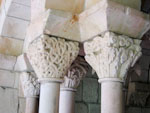 |
Columns in Monastery Decorative columns of the monastery. |
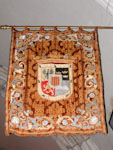 |
Cortez Coat of Arms The Cortez coat of arms hanging from the ceiling along with the Diaz, Desoto, and Hernandez coat of arms. These families were considered Spanish royalty. The yellow and red flag in the middle of the coat of arms symbolizes the ancient Kingdom of Arag... |
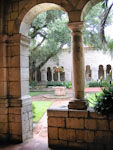 |
Courtyard View of the courtyard and prayer well surrounded by plants and trees. A large banyan tree is visible in the left corner of the courtyard. |
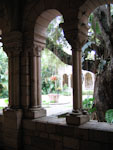 |
Courtyard View of the courtyard from inside a cloister. The prayer well and large banyan tree are visible through the columns. |
 |
Courtyard View of the courtyard and the surrounding cloisters. The courtyard is full of tropical plants and trees such as this white flowered plant and large banyan tree in the corner. |
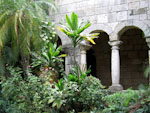 |
Courtyard and Cloister View of the courtyard and cloister. Because the monastery was built on the grounds of a plant nursery, many tropical plants can be seen throughout the courtyard and monastery gardens such as the Hawaiian good luck plant pictured and palm tree picture... |
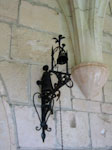 |
Dinner Bell Bell at the entrance of the chapel. This was used to call the monks to meals before the dining hall was converted into the present day chapel. |
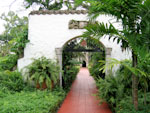 |
Entrance to the Ancient Spanish Monastery Entrance to the grounds of the Ancient Spanish Monastery. The grounds were actually a plant nursery before construction of the monastery, which explains the lush tropical garden that lines the walkway to the cloister entrance. |
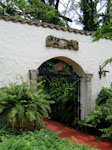 |
Entrance to the Ancient Spanish Monastery Gated entrance to the grounds of the Ancient Spanish Monastery. |
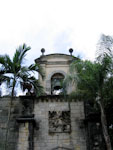 |
Entrance to the Cloisters Detailed view of the entrance to the cloister. Notice the bell and sculpted stone above the doorway. |
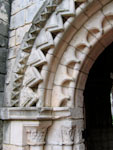 |
Entrance to the Cloisters Detailed view of the arcading, or rowed arches, around the entranceway to the cloisters. This architectural feaure is present throughout the monastery. |
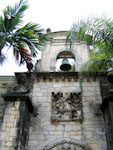 |
Entrance to the Cloisters Detailed view of the bell and sculpted stone above the entrance to the cloisters. |
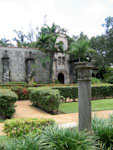 |
Entrance to the Cloisters View of the formal gardens and entrance into the cloisters. In 1925, William Randolph Hearst purchased this ancient monastery in Spain during his travels and had it disassembled and brought to America. William Randolph Hearst was the son of a million... |
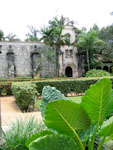 |
Entrance to the Cloisters View of the formal gardens and entrance into the cloisters. |
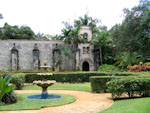 |
Entrance to the Cloisters View of the formal gardens and entrance into the cloisters. The Monastery was built in Sacramenia, in the Province of Segovia, Spain, during 1133-1141. Cisterian monks occupied the monastery for 700 years until it was sold and abandoned. William Rand... |
 |
Exterior Walls of the Cloisters Exterior walls of the cloister. |
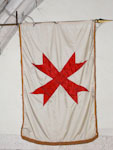 |
Flag in Chapel A flag bearing a red cross hanging in the chapel at the Ancient Spanish Monastery. |
 |
Formal Garden and Entrance to the Cloisters View of the formal gardens and entrance into the cloisters. |
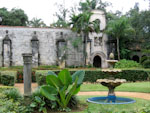 |
Formal Gardens in front of the Entrance View of the tropical formal gardens and exterior of the cloister.The cloister was rebuilt over a 19-month period and took around 1.5 million dollars to be reconstructed. There are actually stones kept in the back of the cloister that were left over f... |
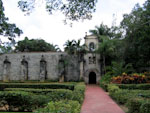 |
Formal Gardens in front of the Entrance View of the formal gardens and entrance into the cloister. The Monastery was built in Sacramenia, in the Province of Segovia, Spain, during 1133-1141. Cisterian monks occupied the monastery for 700 years. However, due to the social uprising and revol... |
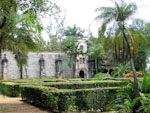 |
Formal Gardens in front of the Entrance View of the formal gardens and entrance into the cloister. |
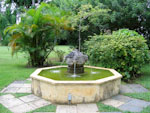 |
Fountain in the Gardens Fountain in the garden. |
 |
Iron Gates of Monastery Entrance Detailed view of the decorative iron gates and garden path leading to the cloisters of the monastery. These are the original entrance gates to the monastery and weigh over 200 pounds. |
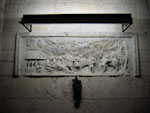 |
Marble Relief A piece of 17th century artwork sculpted from white Italian marble located on one of the chapel walls. This is a carving of the "Visit of the Magi," which is the nativity story in which the three wise men, or three kings from the east, follow a star ... |
| <<First
<Previous
Next>
Last>>
|
|